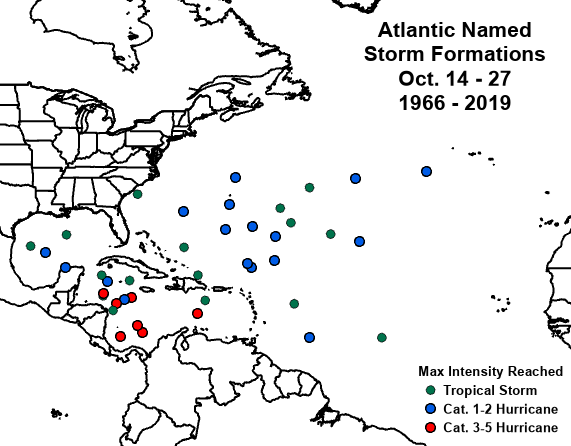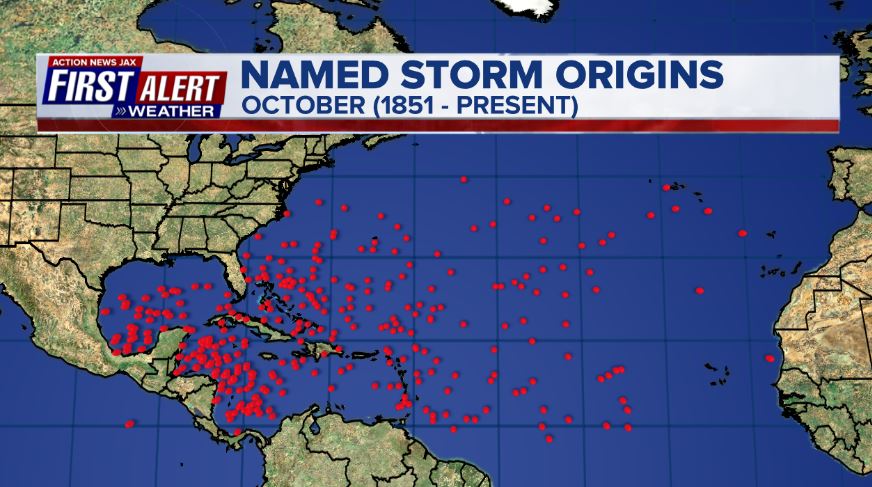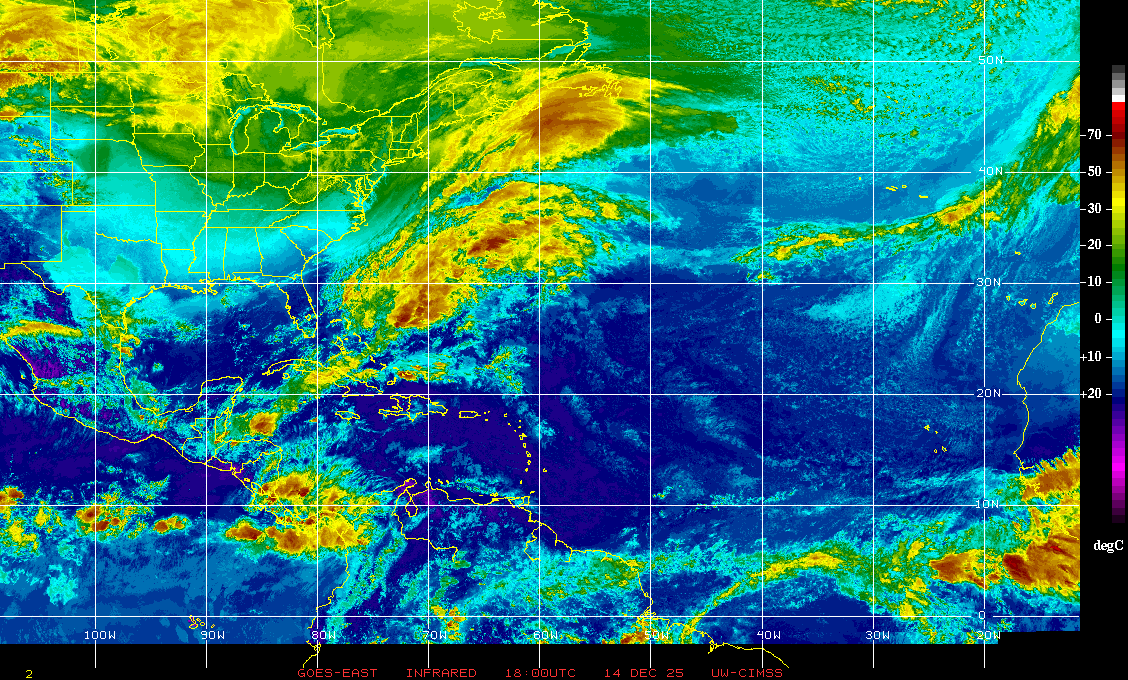Jacksonville, Fl. — The “Buresh Bottom Line”: Always be prepared!.....First Alert Hurricane Survival Guide... City of Jacksonville Preparedness Guide... Georgia Hurricane Guide.
STAY INFORMED: Get the * FREE * First Alert Weather app
FREE NEWS UPDATES, ALERTS: Action News Jax app for Apple | For Android
WATCH “Talking & Tracking the Tropics: The Science Behind the Season”
WATCH “Preparing for the Storm”
READ the First Alert Hurricane Center “Survival Guide”
***** ALWAYS CHECK & RE-CHECK THE LATEST FORECAST & UPDATES! *****
The Caribbean/Gulf of Mexico & SW Atlantic will remain the areas to keep an eye on over the next couple of weeks (climatologically favored too). However, there is nothing immediately threatening through this week with the exception of Bermuda (Epsilon).
Areas to Watch:
(1) low pressure over the Central Atlantic evolved from an upper low, became t.d. #27 Mon. morning & then to tropical storm Epsilon within a few hours - the fastest to the 27th storm breaking the record set in - of course - 2005.... & became a hurricane Tue. Epsilon will drift northwest then a northward heading later this week before turning northeast & accelerating by the weekend. The tropical cyclone will stay over the Central Atlantic far to the east of the U.S. east coast but will move just east of Bermuda Thu./Fri. While the core of the hurricane looks like it’ll miss Bermuda, strong winds & rough seas/surf will still affect the island through the end of the week.
(2) Caribbean - forecast models have generally backed off on low pressure & an eventual tropical cyclone over/near the Caribbean that then moves north/northeast through the end of the month. There are some hints now of low pressure developing near Fl. late in the weekend/early next week then moving rather quickly to the northeast over the Atlantic. An inverted trough is evident near Fl. through the weekend which can sometimes lead to low pressure then tropical development, especially late in the season. The Caribbean is an area favored for late season tropical development in addition to the SE Gulf & SW Atlantic.
Where Atlantic tropical cyclones have formed mid to late Oct. since 1966, by Phil Klotzbach:
Satellite below shows disorganized showers & t’storms over the Bahamas, Fl. Straits & Caribbean... Epsilon over the Central Atlantic far to the southeast of Bermuda... & a strong tropical wave over the Eastern Atlantic at a low latitude but which has little chance to make it very far west....





October tropical cyclone origin points are clustered over the Caribbean, Gulf of Mexico & SW Atlantic:
Atlantic Basin wave forecast for 24, 48 & 72 hours respectively:








:quality(70)/cloudfront-us-east-1.images.arcpublishing.com/cmg/WW5AJL3ARQUGDQMAQUNSFX4CLE.jpg)




















:quality(70)/cloudfront-us-east-1.images.arcpublishing.com/cmg/N7YMXJTJYJEFBCXSUI6KPLO7OM.png)
:quality(70)/cloudfront-us-east-1.images.arcpublishing.com/cmg/SKFDOR2IYNE4NDKFR6PGKELN3E.png)
:quality(70)/cloudfront-us-east-1.images.arcpublishing.com/cmg/QHT46DYGFFBQEHWRTYQW7PQQU4.jpg)
:quality(70)/cloudfront-us-east-1.images.arcpublishing.com/cmg/NQCTWRA7OVFP5ABEQBTBAG2E3A.jpg)
:quality(70)/d1hfln2sfez66z.cloudfront.net/04-18-2024/t_b399b953598a462d8ba0c4539e279e62_name_file_960x540_1200_v3_1_.jpg)